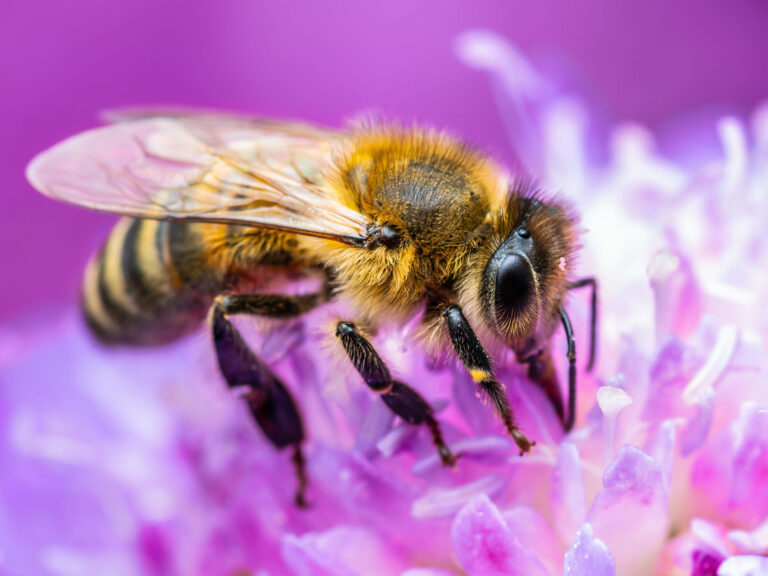The British countryside has been a great source of comfort for everyone lucky enough to be able to access it throughout the various lockdowns over the past year. It is a place of beauty and can provide a much-needed boost to our physical and mental health. With restrictions now easing, more and more people will be venturing out for cliff-top walks, a day by the seaside or even just a catch-up with friends in the local beer garden.
Whilst it’s hardly the jungle out there, it is still important to be prepared when exploring the great outdoors in the UK! From buzzing bees and creepy crawlies to stinging nettles and poisonous plants, we have put together a go-to guide on what to be on the “look-out” for in the natural fauna and insect kingdom this Summer.

1. Bees, hornets and wasps
Sadly, an estimated two to nine people die every year in the UK after being stung by a bee or its similar fliers the hornet and the wasp1. However, this isn’t usually down to the sting itself, which is a sharp sensation like a pinprick, it is linked to anaphylactic shock in people with certain allergies.
In most cases, there are some simple steps you can take to prevent harm. If you have been stung while out and about or even just in your garden, then step one is simple – move away calmly in case there are other insects around. Honeybees and wasps produce a pheromone (a chemical “smell”) that attracts others of the same species to join in. Step two, check that the stinger isn’t in your skin. If it is, gently remove it by scraping with a credit card or something similar. To reduce the pain and swelling caused by the sting try bite away®, a chemical-free, heat-therapy treatment that provides fast and effective relief.
Insect stings can be especially uncomfortable or painful for children who haven’t experienced a sting before and who are more susceptible to them when running about playing outside, so it’s always good to have a quick and easy remedy on hand to stem any tears!
2. Mosquitoes and horseflies
Mosquito and horsefly bites are a little different, but both can be unbearably itchy! Bites from mosquitoes can cause small red lumps on your skin and some people may develop fluid-filled blisters. Horsefly bites are similar where the bitten area will usually be red and raised, but horsefly bites are often considered more painful than mosquito bites – but neither are very nice! You tend to see more horseflies buzzing about during June and July as the weather gets warmer so make sure to keep an eye out if you’re enjoying the warm, sunny weather.
Similar to stings, you should try to keep the area clean with soap and water or an antibacterial wipe if you’re out exploring. The bite away® heat-therapy pen can also help reduce any pain, itch or swelling you may get from a mosquito or horsefly bite!
3. Ticks
These tiny terrors are barely larger than a pinprick with eight legs and a small head that contain needle-like biters. They lurk in the long grass of fields and meadows waiting for unsuspecting, warm-blooded prey to latch on to. However, the bite isn’t the problem. Ticks are one of the most common insect transmitters of Lyme Disease, a potentially debilitating condition that can cause skin rashes, joint swelling and even heart issues. Luckily, not all ticks carry Lyme. However, it’s good to be vigilant, so try to cover legs and ankles if you know you’ll be walking in long grass and carry a pair of tweezers or tick removal tool to get any ticks off fast (for dogs and humans alike)!

4. Weever Fish
Small but often painful, the weever fish can be so annoying for the British seaside holidaymaker. These small, very well camouflaged fish spend their time in the shallows of beaches across the UK. With long, needle-like spines all down their back, they can inflict a severe pain often to people’s feet when paddling in the sea.
As they say, prevention is better than cure, so one way to reduce the risk of weaver fish stings is to wear proper foot protection like hard-bottomed wetsuit boots when in the sea. However, if you do get stung the best thing to do is submerge the wound in hot water as the high temperature is thought to break down the components in the venom. Lifeguards are often well-equipped to deal with these nasty stings so it’s a good idea to consult them if you can!
5. Stinging nettles and poisonous plants
Not strictly fauna, but most people who have ventured out to the countryside have been stung by nettles at some point! The small hairs on the leaves of the nettles penetrate the skin causing an immediate burning sensation as well as itching and a rash, which is often very uncomfortable.
To treat a stinging nettle sting, use soap, milk or a dilute solution of baking soda. However, if you don’t have any of these to hand while exploring you can always try the trusted dock leaf!
You may not think it, but there are also some poisonous plants in Britain and foxgloves are among the most common! Although they may look pretty, foxgloves are potentially deadly. Naturally occurring toxins and pollen distributed by foxgloves can have a negative effect on breathing if you get too close. If inhaled, symptoms can include dilated pupils, vomiting, abnormal heart rate and tremors. Seek medical attention immediately if any symptoms occur.
